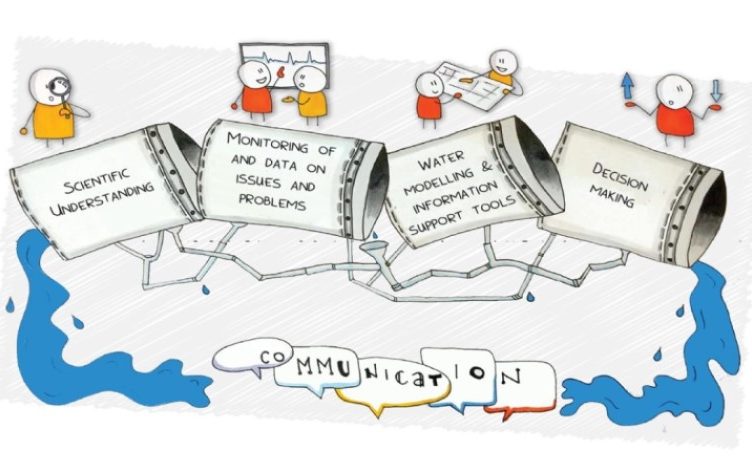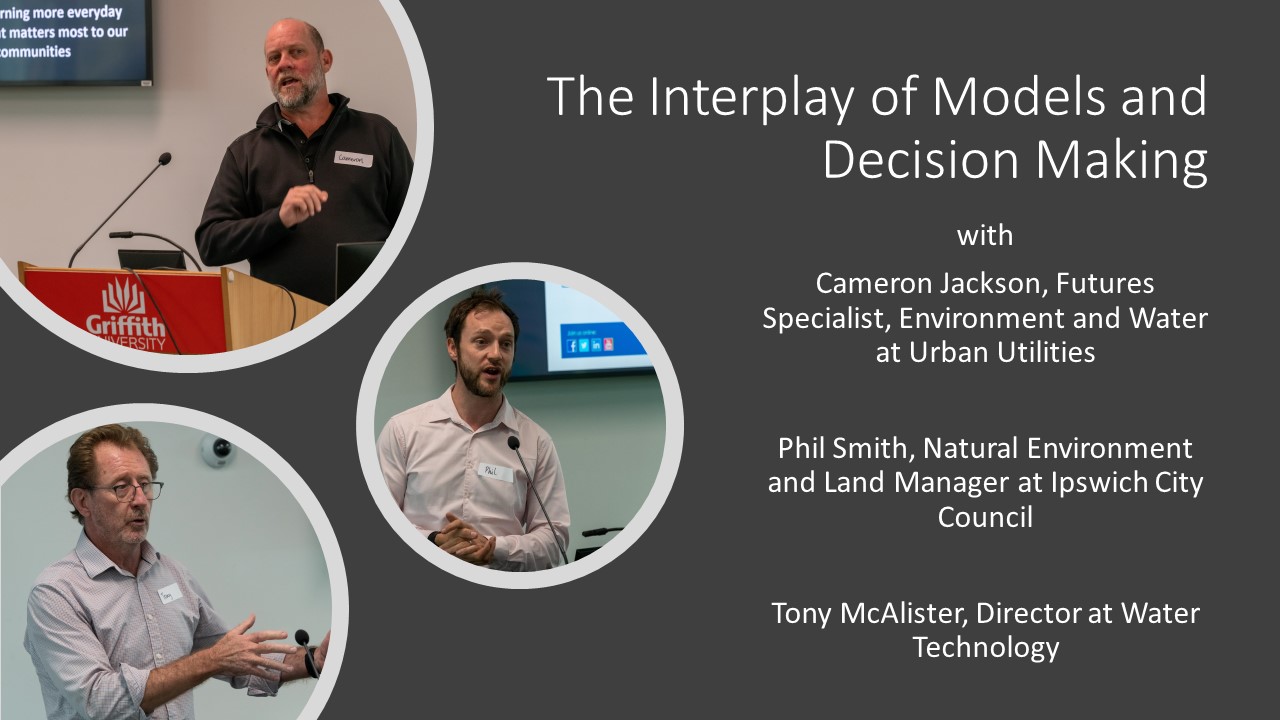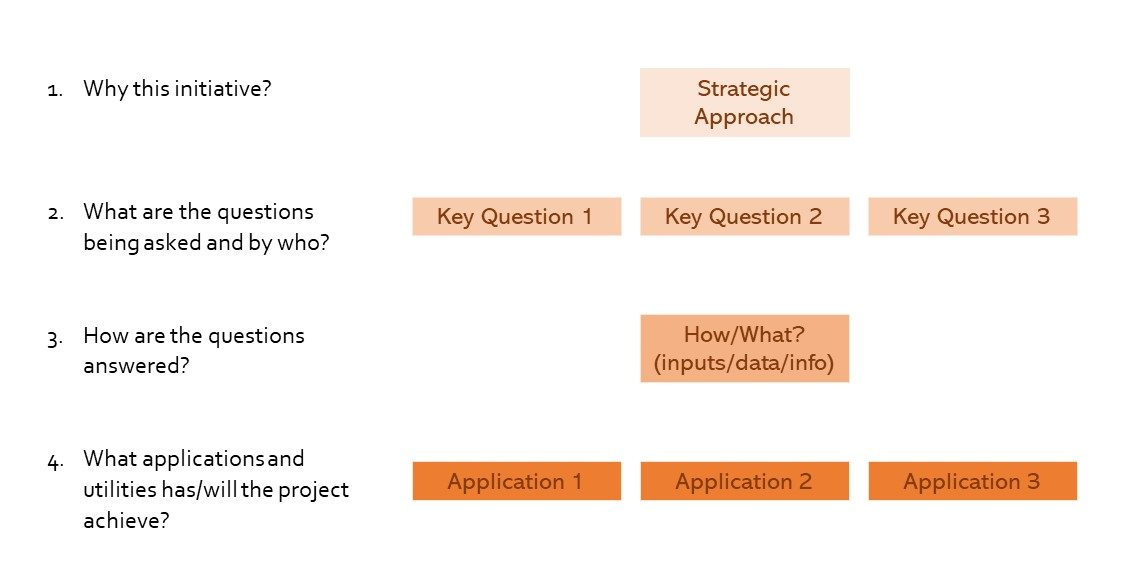
05/12/2024
Event Summary: Overview of water quality modelling projects from the Queensland Water Modelling Network with Callym Dunleavy
Read more
Over the last 4 years, the QWMN workshop activities have consistently looked at Decision Making needs around water management and how good modelling and analytical tools can underpin the evidence-based approach that was desired. But, what does it look like when you really probe?
At this Community of Practice workshop, the team assembled a rudimentary framework to better understand how particular decision-making foci align with certain modelling effort. This workshop reviewed three contrasting case studies to see if this framework might help better describe the inter-relationships we often promote along the water modelling pipeline.
We were joined on Wednesday 7 September, by a range of participants from across water utilities, local and state government, consultants, NRM groups and academics. All three project managers provided a short presentation to the room, giving us a small insight into the complexity of each. Tony McAlister from Water Technology spoke on the complexity of the Aura development on the Sunshine Coast, a greenfield site with a developer interested in high ecological and social sustainability in the face of a changing world. Cameron Jackson from Urban Utilities introduced us to the Receiving Environment Digital Twin (REDiT), a simulated model decision support system designed to display real time water quality data for the Brisbane River. Phil Smith from Ipswich City Council presented on the 2021 publication of the Ipswich Integrated Catchment Plan (IICP) with a strong focus on flood resilience.

To approach this discussion, the IWC engagement team, designed a framework to help tease out details of the processes involved across the life of each project. Facilitating three small group discussions, Piet, Brian and I joined Phil, Tony and Cameron (in that order) to explore their projects through this lens. The framework provided groups with a guided process for discussing each project from initiation through key questions that need to be answered, the kinds of tools, data and inputs required to answer the questions and the various identified applications and utilities achieved intentionally and those that perhaps came up throughout project delivery.
We discussed in depth, the processes involved in project decision making among the small groups with plenty of opportunity to ask questions and glean insights as to how the project was formulated. During this time, we recorded each discussion on sticky notes. The activity was followed by an opportunity to reflect on each project: What went well; How would they characterise/what are the mechanics of the case study? Were there enhancement opportunities? Or any surprises?

View details from preliminary discussion of each projects framework here
Strategic needs are the drivers for any project’s inception. All three case studies discussed on the day were unique in their purpose, application, and level of progress. The key strategic drivers for Urban Utilities’ REDiT are improve environmental and human health, improve cost to customers and be in a position to effectively influence change to water quality regulation to help achieve these. For the Ipswich City Council, flood and other hazard risks are the key driver for the IICP and a major driver for the Aura development is protecting the high ecological value of Pumicestone Passage, the receiving environment.
Among all three projects, population demands, social impacts and water quality/environmental impacts were a common thread. Finding the balance between these needs is fundamental to achieving each project’s success, whilst meeting legislated requirements remains a constant among all three case studies.
The questions that need to be answered become the foundation for the way projects are structured. Though each case study is wholly unique, people and public perception was highlighted as fundamental among all three projects with questions including:
Key environmental concerns included:
To answer these questions, the project needs information and data.
Accessing accurate information and fit-for-purpose models is the next obvious step in answering key project questions and reaching strategic objectives. Long-term data sets, geomorphic MUSIC and hydrodynamic models, climate change and sea level data, public surveys, and multi-criteria analysis (MCA) and cost benefit analysis (CBA) were all mentioned, suggesting both continuity between projects as well as the variety of information required on projects.
All three case studies are discovering co-benefits, not necessarily obvious at project inception. Water Technology discovered their monitoring was able to inform corrective actions. They were also able to “optioneer” different development designs, develop a set of design guidelines for water sensitive urban design (WSUD), water harvesting and water demand and discovered opportunities for future research.
The REDiT project by Urban Utilities is still in development. Even so, they are discovering opportunities to prioritse investment decisions, reduce risk to community through improved tools for stakeholder engagement, proactively respond to public health improvement, and where to focus their efforts to protect areas of high ecological value and meet water quality objectives (WQOs).
Apart from implementation of mitigations and improved planning for disaster response and evacuation, the Ipswich City Council IICP has offered an opportunity to check on social vulnerability and build trust within the community through awareness and education. They have clarity in decision making process and action, planning for landuse and budgets, appreciation of insurance and a rationale for a buy-back scheme.

Following this exercise and a brief afternoon tea, we asked all participants to reflect on their group’s project processes: What went well? What could have been better? This discussion was recorded on video and can be played back here
This question unfolded a series of responses to the exercise around engaging with the framework. Participants appreciated taking a holistic perspective, the conversational style and benefits of brainstorming with others, along with the ability to quiz the project owners on their experiences in project delivery.
What could have been better? An opportunity to identify issues during the project process and more time presenting the actual project. The challenge of simplifying complexity and the focus on understanding process and what happened, is difficult to tease out impacts for decision making.
Emma O’Neill (Aurecon) and Kate O’Brien (UQ) were both asked to share their own reflections of events this event.
Kate and her team have recently completed an animation project called the “Marriage of Data and Models” funded through last year’s QWMN RD&I tender that demonstrates the interaction between modelling and getting the right kind of data.
Following this event, we realise there is more to do to get a clear view of the broader picture. We are going to work further with participants. Watch out for updates on the details found in this framework.
Tony’s presentation on the Aura Development
Cameron’s presentation on the Receiving Environment Digital Twin (REDiT)
More information on the Ipswich Integrated Catchment Plan (IICP)
Animation of the “Marriage of Models and Data”
Video recording of discussion: PLAYBACK HERE